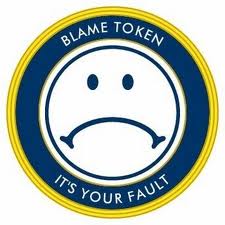Part One: You Have Disappointed Me
In November 2016, Carol Head and Dr. Zaher Nahle of the Solve ME/CFS Initiative secured
a brief meeting with NIH Director Dr. Francis Collins. They reported that it was a positive discussion, but emails I obtained through a Freedom of Information Act request reveal NIH’s intention to manipulate the encounter.

This meeting with Dr. Collins occurred in the immediate aftermath of
Dr. Edward Shorter’s controversial talk at NIH. The ME/CFS community had
expressed outrage after learning that NIH had invited Dr. Shorter, because he espouses the disproven psychosocial theory of ME and demeaning views of people with the disease.
The talk proceeded over our objections, and all sides were still smarting from the controversy when SMCI met with Dr. Collins.
The emails show that Dr. Koroshetz, Director of the NINDS and Chair of the Trans-NIH ME/CFS Working Group, was angry about the controversy. In responding to Dr. Collins’s request for updated information on the RFA and intramural study, Dr. Koroshetz wrote:
I was pretty upset with Solve ME/CFS for making such a huge fuss over the seminar at NIH by the historian from Canada. If you can impress upon Carol and Zaher the importance of Solve ME/CFS joining with the research effort and not inciting mistrust at every twist and turn that would be helpful. Mainly I am worried that researchers will shy away from studying ME/CFS if they are subject to one attack after another due to the strong biases that are out there. Funding could be for naught.
This email blew my mind because it is loaded with . . . I was going to say inaccuracies, but that is too mild a term. First of all, SMCI did not “incite mistrust.” NIH did that all by themselves when they extended the invitation to Dr. Shorter and then offered only a vague not-quite-an-apology. Second, Koroshetz is perpetuating the myth that no one will want to study ME if they are “attacked.” I guess that’s why no one studies autism or HIV/AIDS, because those activists are pretty rowdy. And the “strong biases that are out there are best described as
PACE-Gate and the psychosocial theory of ME. Perhaps Dr. Koroshetz and others should be more concerned about the biases and attacks directed
at people with ME, instead of biases held
by people with ME.
Dr. Collins did not immediately buy Koroshetz’s take on the controversy. He responded:
Walter and Vicki, did Solve ME/CFS specifically stir up trouble for Dr. Shorter? I got a bunch of e-mails about this from ME/CFS advocates, but didn’t see Solve ME/CFS fingerprints on there. I certainly agree that this kind of behavior is counterproductive to the collaborative effort we are trying to create.
When other disease groups protest disproven, antiquated and misogynist views that interfere with scientific research, how is that perceived? Are they “stirring up trouble”? Are they being “counterproductive”?
As I said last November, it is unthinkable that NIH would offer a platform to someone who spoke about people with HIV/AIDS the way Shorter talks about people with ME. Yet NIH seems to think that
we are the problem, and if no one wants to research our disease then we just have ourselves to blame.
In response to Dr. Collins’s question, Dr. Vicky Whittemore forwarded him (without comment) SMCI’s November 7th email asking advocates to denounce the Shorter invitation. That email actually asked advocates to contact members of Congress, by the way, not NIH. Advocates had started emailing NIH on November 3rd. But Dr. Collins replies:
Got it. I will express our disappointment to the Solve ME/CFS leadership.
This email discussion between Collins and Koroshetz repeats multiple familiar talking points: ME activists should not have made a “huge fuss,” and now scientists will “shy away” from studying this disease because of “one attack after another due to the strong biases that are out there.” And therefore: “Funding could be for naught.” I know I am not the only person who is sick of this stereotype, but let’s review:
- It is appropriate to protest NIH’s invitation of a speaker whose views are not grounded in science, and who demeaned and denigrated both people with ME and the National Academy of Medicine.
- Researchers are not subject to “one attack after another.” This is a myth that has been grossly exaggerated and disproven on prior occasions.
- The “strong biases” that have been “counterproductive” are the outdated, disproven, and belittling views held by Dr. Shorter and other adherents to the psychosocial theory of ME/CFS.
- Research funding is not “for naught” unless that funding is wasted on previously disproven hypotheses.
- People with ME are not responsible for the lack of interest in ME research. The blame lies with CDC for focusing on the symptom of chronic fatigue, instead of the disease of ME, and contributing to the false but dominant psychosocial narrative. The blame lies with NIH for refusing to take the steps necessary to attract and fund research for many years.

A circle with a sad face and the caption “Blame token; it’s your fault.”
I’ll speak up for the people in the back: THIS IS NOT OUR FAULT. But according to Drs. Koroshetz and Collins, it is. Thus, Dr. Collins promised to express NIH’s disappointment to SMCI.



